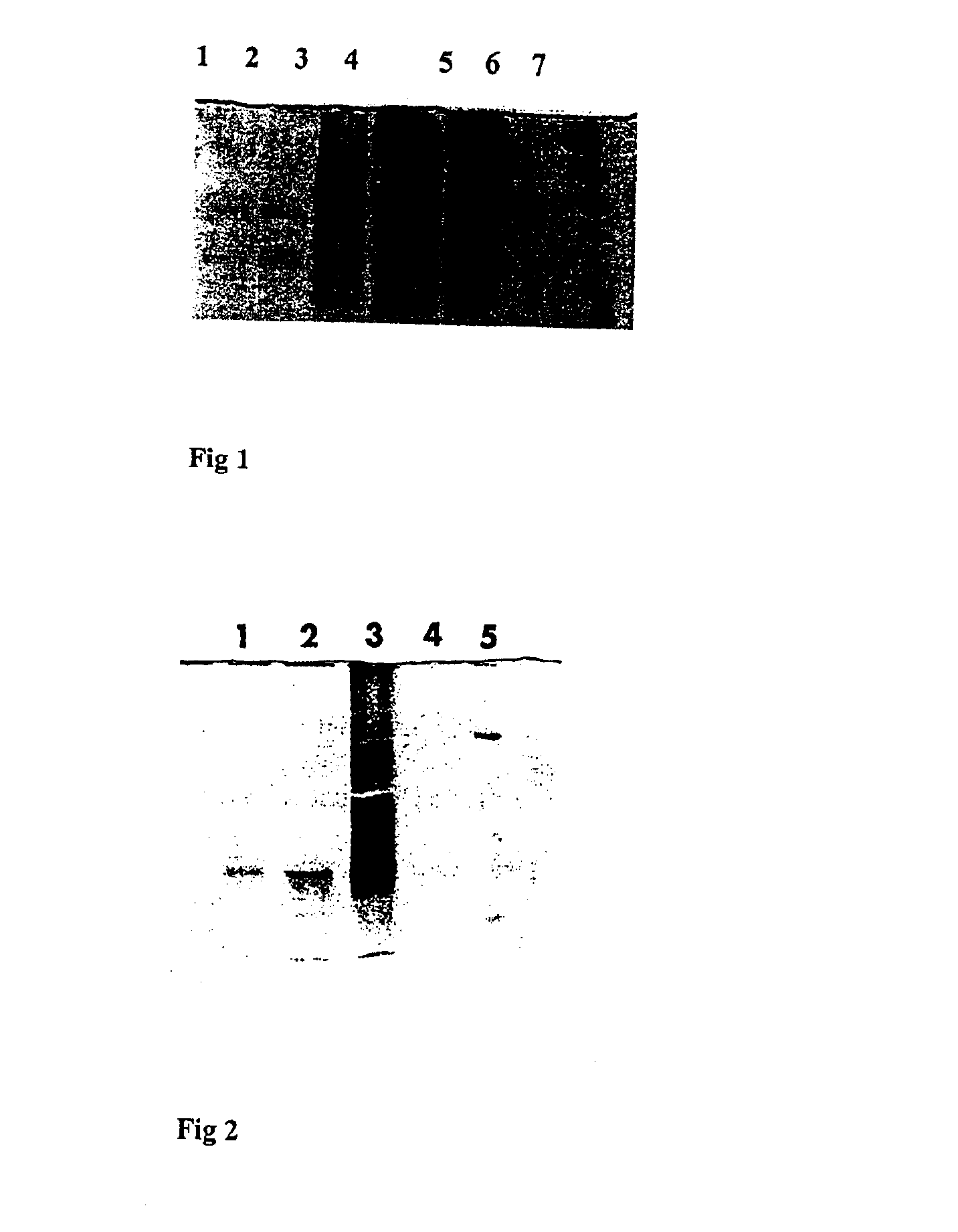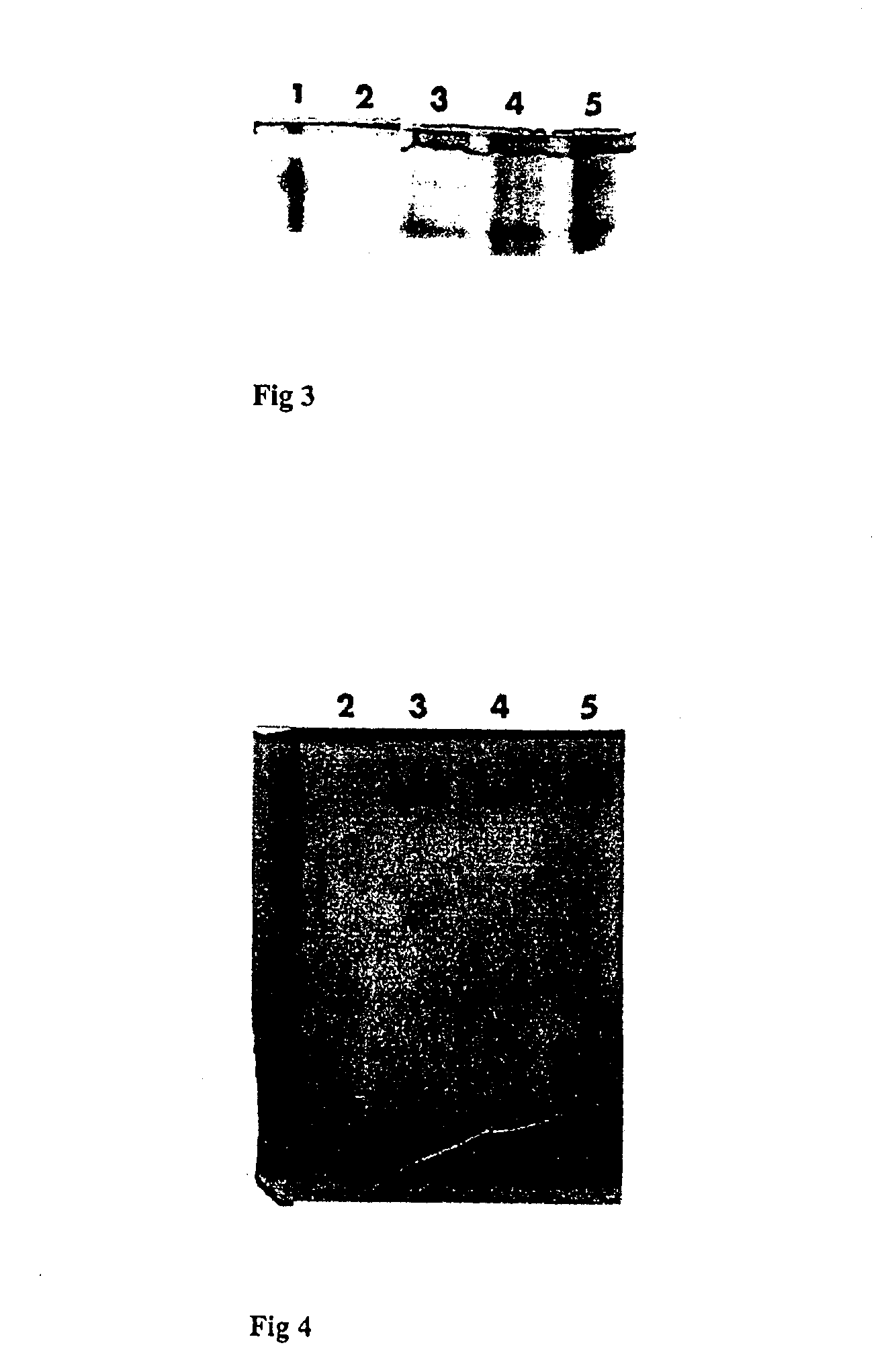Protein profiling of hyper acidic plants and high protein extraction compositions thereof
a technology of hyper acidic plants and protein extraction, applied in the direction of instruments, peptide/protein ingredients, biocide, etc., can solve the problems of complex situation, inability to satisfactorily apply to several tissues (like leaf, petal and sepal) of scented geranium
- Summary
- Abstract
- Description
- Claims
- Application Information
AI Technical Summary
Benefits of technology
Problems solved by technology
Method used
Image
Examples
example 1
[0072]One gram of fresh leaf tissue from cultivar ‘Bourbon’ of scented geranium (Pelargonium sp.) was subjected to aqueous isolation of soluble proteins by hand homogenization of the tissue with half volume (0.5 ml extraction medium per 1.0 g of fresh tissue) of (A) 0.2 M Tris-HCl buffer, pH 7.5 or (B) double distilled water or (C) 0.2 M Tris solution, pH above 10.5 or (D) 0.2 M Tris-HCl buffer, pH 7.5 containing 0.2 M Na2CO3 or (E) 0.2 M Na2CO3 or (F) 0.2 M Tris-HCl, pH 7.5 containing 50% dimethylsulfoxide (v / v) or (G) 0.2 M Na2COa containing 50% dimethylsulfoxide (v / v) in an all glass pestle and mortar at room temperature. The tissue homogenate was centrifuged at 10,000×g for 30 min and the supernatant was collected. The pH of the supernatant was noted. 400 jal of 12% trichloroacetic acid (TCA) was added to 400 fil of supernatant in each case in a microcentrifuge tube and allowed to stand for 30 min. The contents were centrifuged in a microcentrifuge and the protein sediment was r...
example 2
[0075]One gram of fresh leaf tissue from cultivar ‘Bourbon’ of scented geranium (Pelargonium sp.) was subjected to aqueous isolation of soluble proteins by hand homogenization of the tissue with half volume (0.5 ml extraction medium per 1.0 g of fresh tissue) of chilled extraction media: (A) 0.2 M Tris-HCl buffer, pH 7.5 or (B) 0.2 M Tris solution, pH above 10.5 or (C) 0.2 M Tris-HCl buffer, pH 7.5 containing 0.2 M Na2CO3 or (D) 0.2 M Na2CO3 or (E) 0.2 M Tris-HCl, pH 7.5 containing 50% dimethylsulfoxide (v / v) or (F) 0.2 M Na2CC>3 containing 50% dimethylsulfoxide (v / v) in an all glass pestle and mortar at 0 to 4° C. The tissue homogenate was centrifuged at 10,000×g for 30 min at 0 to 4° C. in a refrigerated centrifuge and the supernatant was collected and used as enzyme extract to measure the catalytic level of peroxidase. The catalytic activity was measured spectrophotometrically at 30 ° C., using guaiacol as substrate, following the rate of increase in absorbance at 470 rim. The st...
example 3
[0079]One gram of fresh leaf tissue from cultivar ‘Bourbon’ of scented geranium (Pelargonium sp.) was subjected to aqueous isolation of soluble proteins by hand homogenization of the tissue with half volume (0.5 ml extraction medium per 1.0 g of fresh tissue) of chilled extraction media (A) 0.2 M Tris-HCl buffer, pH 7.5 or (B) 0.2 M Tris-HCl, pH 7.5 containing 50 % dimethylsulfoxide (v / v) or (C) 0.2 M Na2CO3 or (D) 0.4 M Na2CO3 (E) 0.2 M Na2COs containing 50% dimethylsulfoxide (v / v) in an all glass pestle and mortar at 0 to 4° C. The tissue homogenate was centrifuged at 10,000×g for 30 min at 0 to 4° C. in a refrigerated centrifuge and the supernatant was collected and used for carrying out sodium dodecyl sulfate-polyacrylamide gel electrophoresis (SDS-PAGE) to display polypeptide profiles in the tissue extract. For this, 100 μl of the extract was mixed with equal volume of SDS sample buffer in a microcentrifuge tube and the contents were kept in a boiling waterbath for three minute...
PUM
| Property | Measurement | Unit |
|---|---|---|
| temperatures | aaaaa | aaaaa |
| pH | aaaaa | aaaaa |
| temperature | aaaaa | aaaaa |
Abstract
Description
Claims
Application Information
 Login to View More
Login to View More - R&D
- Intellectual Property
- Life Sciences
- Materials
- Tech Scout
- Unparalleled Data Quality
- Higher Quality Content
- 60% Fewer Hallucinations
Browse by: Latest US Patents, China's latest patents, Technical Efficacy Thesaurus, Application Domain, Technology Topic, Popular Technical Reports.
© 2025 PatSnap. All rights reserved.Legal|Privacy policy|Modern Slavery Act Transparency Statement|Sitemap|About US| Contact US: help@patsnap.com


